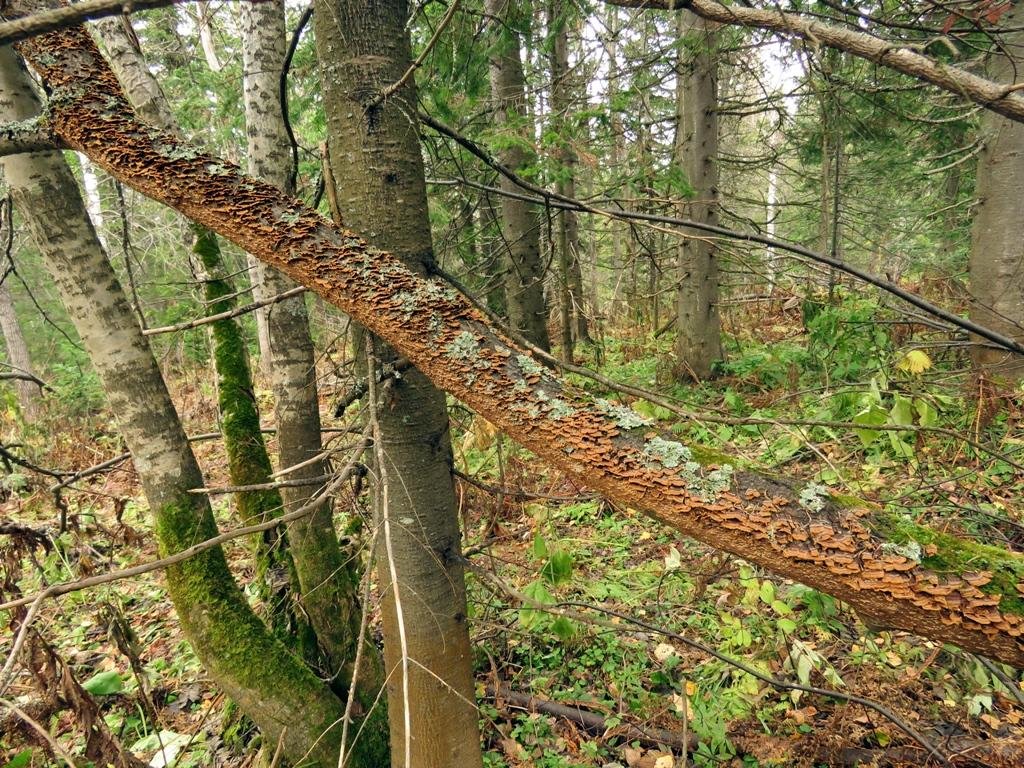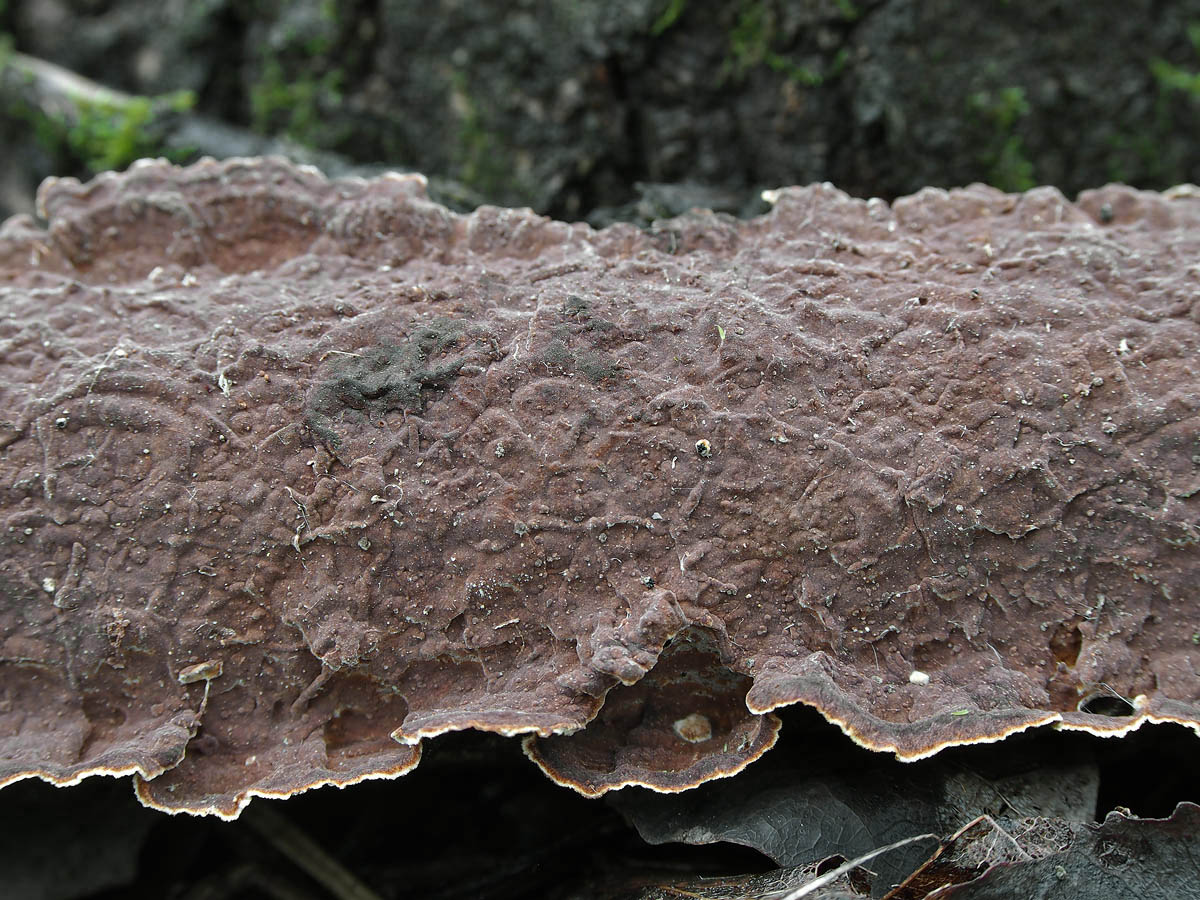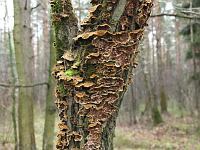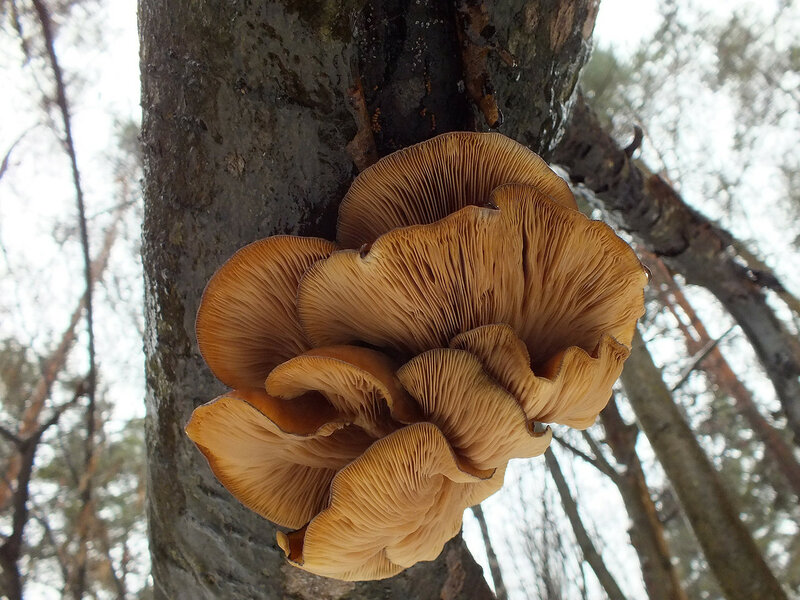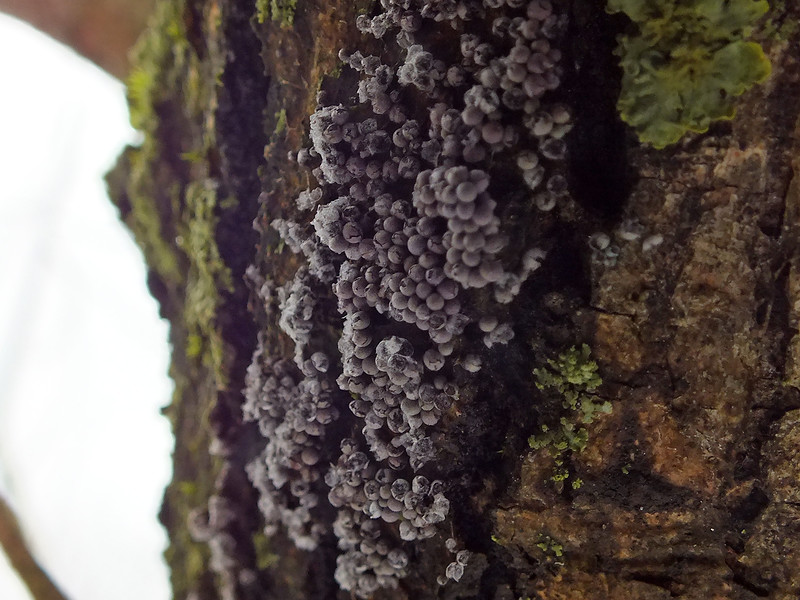Control measures for tobacco and makhorka diseases
Breeding and regionalization of disease-resistant varieties.
Collect seeds only from healthy plants. Disinfection of seeds two to three days before sowing directly on farms by soaking in formalin solution (20 cm3 of 40% formalin is dissolved in 1 liter of water) for 15 minutes, followed by drying in a dark place. For 1 kg of seeds, 2 liters of solution are consumed.
You can also disinfect seeds by heating them to 85-90 ° C within an hour from the moment when they are heated to the specified temperature. It is necessary to warm up the seeds gradually so that the air temperature in the warmer chamber does not exceed the temperature of the seeds by more than 20 ° C.
Seed dressing with formalin is effective against fungal and bacterial diseases, the causative agents of which can be found on the seeds. Heat warming gives good results against white motley viruses and other seed-borne viruses.
Place greenhouses and beds for growing tobacco and tobacco seedlings no closer than 1000 m from drying sheds and tobacco warehouses in order to avoid the introduction of pathogens of various diseases.
Disinfect greenhouse equipment with a solution of 40% formalin (1:25), followed by keeping under a tarp for four days at a temperature not lower than 10 ° C. As a result of such disinfection, not only fungal, but also bacterial pathogens die, and viruses are inactivated.
Greenhouse soil (mixture) against root rot, black leg and other diseases is disinfected with formalin, benlate (fundozol) or carbation.
Formalin is used in the form of an aqueous solution (1:40), which is carefully poured over the greenhouse mixture (80-100 liters of solution per 1 m3 of the mixture). Thereafter, it is quickly piled up and stored until used. This work is best done in the fall.
Benlate (50% wettable powder) at the rate of 1.5-3 g / m2 is used against root rot by watering the soil in greenhouses with a 0.2% suspension of the drug after sowing seeds and when the first signs of disease appear on seedlings.
Carbation (40% aqueous solution) is used at the rate of 0.2 liters of the drug, dissolved in 10 liters of water, per 1 m3 of greenhouse soil. You can disinfect with this drug in autumn or spring, but not less than 18 days before the start of sowing seeds.
It is better to do this work in the morning when the air temperature does not exceed 8 ° C. Carbation is also recommended to disinfect the soil in the open field no later than 30 days before sowing seeds or planting seedlings. The consumption rate of the drug in this case is 750-1000 l / ha.
In nurseries against root rot, it is recommended to apply 85-90% granular dazomet (400 kg per 1 ha) to the soil (once every three to four years), but no later than 30 days before sowing seeds or planting seedlings.
The thickening of crops in greenhouses and on ridges should not be allowed, otherwise this can lead to an increase in diseases.
Moderate watering, airing greenhouses and timely loosening contribute to the friendly growth and good development of seedlings, as well as increase their resistance to disease.
Against peronosporosis, bacterial wild ash and other diseases, prophylactic spraying of seedlings in greenhouses and on ridges with a 0.3% suspension of 80% zineb at the rate of 0.25 liters per 1 m2 is used.
In case of detection of peronosporosis in the neighboring area, the seedlings are sprayed twice a week. Regular spraying of tobacco seedlings in greenhouses makes them resistant to downy mildew within 10-15 days after planting in the field. It is forbidden to plant diseased seedlings.
Against peronosporosis of tobacco and other diseases during the growing season, spray with 0.4% suspensions of 80% cineb (2.4-4 kg / ha) or 80% polycarbacin (2.4-3.2 kg / ha) ). The timing and frequency of treatments are set by the signaling of the plant protection service, while the last treatment with polycarbacin and zineb is carried out at least 6 days before the next breaking of the leaf. Against powdery mildew, spray with a 1% suspension of colloidal sulfur (6-8 kg / ha).
Systematic management of insect vectors and weeds is also required. Timely and proper care of tobacco and makhorka is a reliable guarantee of a high-quality harvest.
Varieties
- Rhodes (‘Rhodos’) - ampelous plant, large (8-10 cm) flowers-bells of purple color;
- Ruby Bells - an annual liana with dark ruby flowers, a perennial - as a houseplant;
- Chinese lanterns - height up to 3 m, flowers (5 cm) purple;
- Purple Rain (‘Purple Rain’) - up to 3-4 m tall, heart-shaped leaves with a red edge, corolla of red-purple color, surrounded by lighter petals;
- Purple bell vine (‘Purple bell vine’) - up to 3 m, purple corolla, crimson-red petals, cut the stems for the winter and store in a greenhouse.
Types and varieties of ratibids
In addition to the columnar ratibid, or elongated (Ratibida columnifera), the description of which we gave at the beginning of the article, one more species can be found in culture:
Ratibida pinnata (Ratibida pinnata = Rudbeckia pinnata)
- a perennial plant from North America with a dark bronze convex center of tubular flowers and bright yellow ligulate flowers contrasting with them. Gray-green at the moment of opening the basket, the disc gradually darkens to a black-brown color. The height of this type of ratibid is from 120 to 150 cm, the stems are stiff and hairy, the leaves are pinnate, divided into 3-7 toothed spear-shaped segments. The plant is unpretentious, drought-resistant, frost-resistant and is not affected by pests or diseases.
In the photo: Ratibida pinnata (Ratibida pinnata = Rudbeckia pinnata)
It should be mentioned that this article was based on the cultivation of ratibid seeds from the columnar "Mexican Hat". This ratibide has varieties and varieties popular in the culture:
- var. Pulcherrima is a plant with wine-red petals with yellow edging;
- Yellow Cheyenne is a plant with bright yellow ligulate flowers;
- Red Midnight is a variety with dark red marginal flowers.
Ranunculus: growing from seeds and tubers Rhododendron: planting and care, growing from seeds
After this article, they usually read
Add a comment
Description

In its natural habitat, rhodochiton braids tree trunks and shrubs, growing in larger ravines, is found in the southeastern part of Mexico at an altitude of 1500-3500 m above sea level, there is no winter, but the temperature is low (compared to lower zones), the plant can be grown in colder areas. Height, one-year growth can reach 3 meters, if Rhodochiton grows in open ground under favorable conditions. In our conditions, it does not reach this length. Bloom date, starts blooming in June until temperatures below 5 ° C appear at night. The color of the flowers, the calyx is purple, the corolla is brownish-purple. In some countries, Rhodochiton is sometimes called the "blood cup". The place, with our uncertain summer weather, is practically the only place - direct sunlight. Frost resistance, Rhodochiton is damaged at temperatures below 5 ° C.
Caring for akalifa at home
Bloom
Indoor akalifa can bloom at any time of the year or even all year round. Spike-shaped fluffy inflorescences are collected from a large number of small red-crimson flowers. In some varieties, the length of the inflorescence can be up to 50 centimeters.
In order for the plants to always look attractive, one must not forget to promptly cut off the inflorescences that have begun to fade.
Temperature
Akalifa prefers to be warm. In the spring-summer period, the optimum air temperature is from 21 to 25 degrees, and in the cold season - from 12 to 16 degrees. If it is too hot in the room, this will lead to stretching of the shoots and to the loss of decorativeness by the plant. If the room has the minimum permissible air temperature, then this can cause a slowdown in the growth of the bush and the development of various diseases in it.In addition, drafts are especially dangerous for Akalifa. In this regard, in no case should it be carried outside, even in the summer.
Air humidity
Since akalifa is a tropical plant, it needs constant high humidity. During the growing season, it is recommended to spray the bush systematically from a spray bottle. In this case, it is the air around the plant that needs to be humidified, and not its foliage. To do this, use well-settled non-cold water. It is impossible to moisturize the plant during the flowering period.
Illumination
This plant is highly photophilous, despite this, it needs mandatory protection from direct sunlight. Best of all, the bush will feel on the windowsill of an east or west orientation. It can also be placed on the south window, but in this case it will have to be additionally protected from direct sunlight. Akalifa should not be grown in a shaded place, as this will cause its stems to become elongated and the leaves small and faded.
Watering
Watering should be systematic and moderate at any time of the year. Remember not to allow the potted earth to dry out. It should be borne in mind that on hot summer days, the potted substrate dries up much faster. During the winter months, the frequency and amount of watering should be slightly reduced.
Pot selection
The plant feels great in that pot, where its root system is quite cramped. But at the same time, do not rush to acquire an excessively small pot for akalifa, as this will only harm her. The root system should fit normally in the chosen container and have a small margin of room for further growth.
Soil mixture
Such a flower grows well in almost any soil mixture, the main thing is that it is well-drained and light. Best suited for growing it is a mixture of leafy and soddy soil, humus, peat and sand, which should be taken in equal parts.
Top dressing
It is imperative to feed the Akalifa from the first spring days until mid-October. For this, a mineral complex is used, which is introduced into the soil mixture with a frequency of 1 time in 15–20 days. Also, the plant can be regularly fed with organic matter. For example, you can use vermicompost.
Akalifa transplant
While the bush is young, it is very fast growing. In this regard, he needs regular transplants into larger pots, which are carried out once a year. It is recommended to transplant adult specimens no more than 1 time in 3 or 4 years. At the same time, old large bushes, if necessary, are transplanted by transferring into a larger container, or simply systematically replace their top layer of soil mixture with a new substrate.
Pruning
In order for the bush to always be neat and effective, formative pruning should be carried out annually in spring. To do this, cut off all the stems, leaving ½ part of their length (slightly less). If necessary, the plant can be rejuvenated, for this all its shoots are shortened to 0.2–0.3 meters. In order for young shoots to appear on the stumps as soon as possible, it is recommended to treat them with a solution of Zircon.
Dormant period
Akalifa, growing in indoor conditions, develops normally even without a full rest period. Decreasing daylight hours can signal a bush that it is time to rest. Such a mild dormant period does not last long, and it will require a suspension of top dressing, as well as a reduction in the frequency of watering.
Brachycoma care

Since brachycoma is an undemanding plant, it is quite simple to grow it:
How to water
Watering should not be excessively frequent and plentiful, because such a culture prefers dry soil. If the ground is constantly wet, then this can cause the death of the brachicoma.
Lighting
The plant feels great in a well-lit area, and this is due to the fact that its homeland is hot Australia.
How to feed
Throughout the summer period, such a culture will need only 3 feeding. To begin with, the bushes are watered with any universal fertilizer in a low concentration, and then the soil surface around them is sprinkled with a thin layer of wood ash.
Bush formation

In order to increase the splendor of the bush and the abundance of flowering, it is necessary to pinch its top. To prolong flowering and make it even more abundant, you need to remove faded inflorescences in a timely manner.
Priming
The plant needs a very loose soil. In this regard, the soil surface around the bushes should be systematically loosened. However, such procedures should not be carried out too often.
If desired, in September, you can dig up brachicoma bushes, plant them in flower pots and transfer them to the room. However, before this, if necessary, it is necessary to collect the seeds. The collected seeds, if there is such a desire, can be sown in boxes in September or October. With good care and providing conditions suitable for the growth of a brachycoma, it will bloom in the winter, but already in the house.
Therefore, it is recommended to pay attention to this culture, first of all, for those who have a winter garden or greenhouse.
Reproduction methods
Growing from seeds
For sowing levizia, only freshly harvested seed material is used, since it very quickly loses its germination. Dig up an area in the garden in advance and sow the seeds in late autumn. Then cover the surface of the bed with a thick layer of mulch (compost or peat).
The first seedlings should appear in the last days of March or the first ones in April. There are two ways to further grow seedlings:
- Grown seedlings should be cut down.
- Young plants are not touched throughout the year. The next spring, they are immediately transferred to their permanent place.
You can also grow levisia through seedlings. One month before sowing, the seed is placed on a refrigerator shelf. Sowing in boxes is carried out in the spring.
You can do it differently. Small containers are filled with loose, moist soil mixture, then levizia is sown. The seeds are covered with a thin layer of soil. The container is covered with glass from above. They put him in a cold place for a month. And after the first shoots appear on it, the container is rearranged to heat. Wait for the seedlings to form 2 or 3 true leaf plates.
Planting seedlings in the garden is carried out only when the threat of recurrent spring frosts has passed. A bush grown from a seed for the first time will please the gardener with flowers only in the second or third year of growth.
Levisia from seed, my new houseplants
Cuttings
In an adult plant, as it grows, lateral rosettes are formed, which do not have their own root system. If necessary, in the spring, use a sharp knife to separate the outlet and plant it in poor soil in a not very large container. When 2 hours remain before planting the cutting, it is treated with a fungicidal preparation and an agent that stimulates root growth. Place the planted cuttings in a cool place where they should take root after a while. After the root system grows and gets stronger, the bushes can be planted in a permanent place.
Growing from seeds

By purchasing Rhodochiton seeds, there is a high chance that the seeds are ready to be sown. Own seeds must be stratified. Stratification is useful, in nature, seeds must go through a period of cold to germinate, stratification improves the speed and uniformity of seedlings. Seeds quickly lose their germination, and those that have been lying for several months can sprout even after 90 days. Moreover, the first can emerge after 30 days, uneven seedlings cannot be avoided.
Due to the long germination period, seeds are sown in late February - early March, even with only a windowsill.Until the time of germination, the moisture of the substrate is maintained by inserting the container into a plastic bag or by placing the glass on a larger container. The soil temperature is maintained within 18 ° C. With a heated mat, set the temperature to about 24 ° C, seedlings will appear much faster
With such a long germination period, it is important that the seeds be introduced into the soil specially designed for sowing, in extreme cases, a substrate for cacti is purchased

After the pick, a few days later, it is necessary to provide the Rhodochiton with increased air humidity. You can put special caps on the pots or cut off the tops of plastic bottles (the best 2 liter). Seedlings grow slowly, large enough shoots will lie around other plants, before planting in pots, thin sticks are installed for support, for plants that will grow in open ground or in vertical pots. Seedlings intended for hanging pots after growing up are immediately dived into hanging pots, allowing them to hang freely.
You can not expose Rhodochiton to drafts, you need to gradually accustom to lower temperatures. They take them outside when the temperature at night is above 10 ° C.
Types and varieties of matrix with photos and names
As a rule, the most popular among gardeners are such representatives of the Astrov family as: popovnik, nivyanik, aster and gerbera. However, some types of marticaria are also quite often chosen to decorate gardens and flower beds.
Chamomile (Matricaria recutita)
Or chamomile (Matricaria chamomilla), or peeled chamomile (Chamomilla recutila). This plant is a type species of the genus Marticaria. A not very tall bush has a weak specific aroma. Its root is tap and branched. An erect, highly branching single stem is hollow from the inside, it can reach a height of about 0.4 meters. Sedentary alternately located leaf plates have a double pinnately dissected shape, and they include pointed narrow-linear lobules. At the tops of the stems there are small single inflorescences-baskets, which include reed flowers of white color and tubular ones - yellow. Under natural conditions, such a flower prefers to grow on sandy soils. And in garden plots, it is planted along with wildflowers. Or for it, you can choose such a site, which will then be dug up.
Chamomile Chikhachev (Matricaria tchihatchewii)
This lush blooming look is highly decorative. In nature, it can be found in Asia Minor. The height of the branchy bushes can vary from 0.15 to 0.3 meters. On a leafless long peduncle, single inflorescences-baskets grow. Often this species is cultivated in rock gardens, or on stony soils, where other crops grow very poorly.
Fragrant chamomile (Matricaria discoidea)
The homeland of this species is the Far East and North America. However, today it can be found in almost all countries, while such a flower grows like a weed. The height of a bush with a specific odor can vary from 0.1 to 0.3 m. In the upper part, the shoots branch strongly. The sedentary alternate leaves are doubly pinnately divided into pointed lobes of a flat linear shape. On short pedicels, small inflorescence baskets grow, which include only tubular flowers of a yellow-greenish color, they grow on short peduncles. This type is widely used for medicinal purposes, as well as for cosmetic purposes, for example, for dyeing hair.
Chamomile (Matricaria parthenium)
Either the excellent matrix (Matricaria eximia), or the chrysanthemum parthenium (Chrysanthemum parthenium). This species is found in the wild in Europe. It is very similar to a small chrysanthemum due to its characteristic aroma and lobed carved leaf plates.The plant forms compact bushes, which branch very strongly, their height can reach about 0.4 m. A large number of inflorescences-baskets are formed on them, reaching about 25 mm in diameter. Their middle is yellow, and the shape of ligulate white flowers is oblong-rounded. The baskets are part of the thick scutes. Flowering begins in mid-summer, and ends in late autumn. This species has a large number of varieties and garden forms:
- White Star. Simple inflorescences-baskets are painted white.
- Aureum. Large-lobed leaf plates have a golden color. Baskets have a yellow center and white marginal flowers.
- Golden Ball. The globular inflorescences of golden color contain only tubular flowers.
- Snow Globe (Snow Ball). Short ligulate flowers are wide and white.
- Lemon Santana. The color of the baskets is light yellow.
What appears to us when we hear such a native Russian word - "chamomile"? Of course, these are simple and unpretentious, but such lovely flowers growing in the meadow and forest edges. The very ones on which in childhood and adolescence we loved to guess: loves - does not love.
Real Chamomile - Chrysanthemum parthenium
But no! These are not chamomiles at all, scientists call those flowers the common daisy, or popovnik. But among the people it is they who are called daisies. This name also stuck with many other flowers, similar to them and having the same inflorescence-baskets. There are many garden annuals and perennials among them. Real daisies are a little different, and it is about them that we will talk today.
Growing kobei from seeds
Sowing
It is not so easy to grow a kobei from seeds, but it is quite possible. The fact is that the shell of large seeds is distinguished by a high density, which greatly complicates the appearance of sprouts. Therefore, before sowing, such a shell must be dissolved to such a state that it looks like mucus, and then removed by hand. To do this, you need to spread the seeds on the bottom of the container, which should be wide enough, while taking into account that they should not come into contact with each other. Pour water into the container and close it very tightly with a lid to prevent evaporation of the liquid. From time to time, it is necessary to check the seeds and at the same time remove the sagging part of the shell, and then lower them again into the container. As a rule, it takes several days to completely clear the seeds from the shell.
For seedlings, this plant should be sown in February or the first days of March. For sowing, it is recommended to use individual, not very large cups, in which one seed is placed, thus you do not have to injure young plants during a dive. To sow seeds, it is recommended to use a universal soil. The seed must be laid on the surface of the soil, while the flat side must be turned down, and then sprinkled on top of it with a layer of the same soil mixture, the thickness of which should be 15 millimeters. Seedlings appear after a different amount of time. If you properly prepared the seeds and completely removed the entire shell, then the seedlings may appear after half a month.
Kobei. Series 1. Sowing and diving.
Seedling
When the seedlings grow up a little, and they have 2 real leaf plates, they should be dived together with a lump of earth in containers, which should have a volume of about three liters. This will create a strong root system and powerful stems. During transplanting, do not forget to put special ladders made of metal or plastic in the container, in this case the seedling will grow using it as a support. At the same time, you should begin to harden the seedlings. To do this, the plant is transferred to a loggia or balcony, which must be insulated or, in extreme cases, glazed. The plants will stay here before transplanting, while slowly getting used to the cold air.As a rule, three weeks of hardening is enough to get the plants fully accustomed to the outdoor climate. Then you can start planting grown and matured seedlings in open ground.
Popular varieties
There are many varieties of Tuevik drooping - among them there are both real giants and dwarf ornamental plants. The most popular are three varieties: "Variegata", "Nana" and "Aurea".
Variegata
Variegata (Thujopsis dolabrata Variegata) is a variety that differs from other varieties by its unusual variegation of needles. The average growth of a tree is 12-15 m and it grows very slowly, like all varieties of Tuevik - by the age of 15 years, Variegat barely reaches 1 m in height.
The branches of the Variegata variety sag noticeably, especially the ends. Young shoots are flat. The needles are in the form of scales, gray below and green above. Interspersed with a creamy white color give the tree an exotic look, which makes the needles look quite variegated.
Crohn Variegata has the shape of a wide cone. The crown span is 1 m on average.

This variety thrives best on well-hydrated fertile soils, but also thrives on acidic soil. It is better to plant Variegata in an area protected from the wind with good illumination, but in general the plant is quite shade-tolerant. The plant is hardy, like the vast majority of conifers, but young trees can partially freeze over in severe frosts.
Variegata is often used to decorate parks, because this variety is resistant to air pollution and is suitable for urban cultivation. Most often, the plant is planted singly.
 The plant is hardy, like the vast majority of conifers.
The plant is hardy, like the vast majority of conifers.
Nana
Nana (Thujopsis dolabrata f. Nana) is a dwarf variety of Tuevik chisel. This is a low-growing shrub of a pillow-like compact shape with a diameter of no more than 90 cm.The height of the plant rarely exceeds 60 cm, and Nana grows very slowly - the growth of a ten-year-old plant with good care is only 30 cm.
Shrub shoots are flat and short. The needles are shiny, scaly, small. The needles are tightly pressed against the twigs. Unlike Tui, Nana does not turn brown in winter and retains an attractive appearance throughout the year. The cones of the variety are round in shape.
The tree grows well in the shade, even better than in the sun. Regular but moderate watering contributes to the rapid growth of the plant. When choosing a soil, it is better to stay on moist, well-drained soils. In conditions of increased dry air, Nana may stop growing.

The advantages of the variety include high decorativeness and compact size, allowing it to be used as an ornament in small areas. If you wish, you can even place this shrub on the balcony. Nana looks especially good in landscape compositions in combination with large stones.
Aurea
Aurea (Thujopsis dolabrata Aurea) is a dwarf shrub with golden yellow needles and a flat-round crown. An adult plant reaches 0.5-1 m in height. It grows slowly.
The branches of the tree are flat, curved in the shape of an arc, the trunk is thin. The needles are shiny, green. Cones are round, with scales bent outward.
The variety is drought-resistant and frost-hardy, but the branches of young trees can freeze under severe frosts, so it is recommended to cover the plants for the winter. Mature trees do not need shelter.

Aurea grows best on humified soil. Also, the plant makes increased demands on air quality, as a result of which it is better to grow it outside the city.












